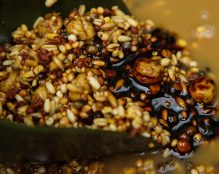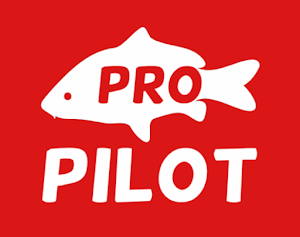As autumn sets in, as a seasoned angler I look for strategies for targeting autumn carp. While spring is the prime fishing season, autumn offers unique challenges and rewards. The cooler temperatures and quieter banks make it an excellent time for carp fishing, as carp begin to feed heavily in preparation for winter. Here’s how Lee adapts his approach for autumn:
Understanding Seasonal Changes in Carp Behaviour
Autumn is a time of transition, not only for nature but also for carp. As temperatures drop, carp adjust their behaviour, making it crucial for anglers to understand these changes to increase their chances of a successful catch.
Increased Feeding
During autumn, carp enter a phase of increased feeding. This is driven by their need to build fat reserves to survive the colder winter months. Carp are more likely to be found foraging for food, making them more accessible to anglers. However, they are also more cautious due to the pressure they’ve experienced over the summer.
Weight Gain and Colouration
Post-spawning, carp begin to gain weight and take on their best colours. The vibrant hues of autumn carp are a visual treat and a testament to their healthy condition. Capturing an autumn carp can be especially satisfying, as they are often in prime physical shape.
Timing and Effort: The Keys to Success
Timing and persistent effort are crucial when fishing for autumn carp. See insights on how to make the most of this short but rewarding season.
Peak Fishing Period
The peak period for autumn carp fishing runs from early September to late October. During these months, the conditions are optimal for carp to be actively feeding. After late October, as the days shorten and temperatures drop further, carp become less active, making fishing more challenging.
Consistent Effort
You have to emphasises the importance of consistent effort during the autumn months. Unlike the predictable conditions of spring, autumn requires anglers to be more diligent and persistent. Regular fishing trips during this period can lead to remarkable catches, as the combination of decreased angling pressure and increased carp activity works in the angler’s favour.
Tactical Adjustments for Autumn Fishing
Adjusting your tactics to suit the autumn conditions can significantly improve your chances of success. I have outlined several key strategies that have proven effective over the years.
Location Selection
Choosing the right location is always critical in carp fishing, but it becomes even more important in autumn. Carp behaviour changes with the seasons, and understanding these changes can help you identify the best spots to fish.
Avoid Pressured Spots
During autumn, it’s wise to avoid the spots that were heavily fished during the summer. Carp learn to associate these areas with danger and become more cautious. Instead, look for less obvious spots that haven’t been pressured as much.
Create New Spots
Using tools like a Fox Grappling Lead, you can clear and create new spots in the lake’s middle areas. These spots, which have seen little to no pressure throughout the year, can be very attractive to carp. Carp are naturally curious and will often investigate new, clear areas.
Baiting Strategy
Your baiting strategy needs to be on point during autumn. Carp are feeding heavily, but they are also more cautious. A great approach to baiting that has yielded great results.
Boilies, Boilies, and More Boilies
For me, autumn is all about boilies. I recommend using highly pungent boilies to stand out against the changing smells of the lake bed. The stronger the smell, the more attractive they are to carp.
Preparation is Key
Preparing your bait a couple of days before your trip can make a significant difference. Soaking boilies in a strong-smelling liquid like CC Moore Krill enhances their attractiveness. This preparation ensures that your bait stands out and draws carp from a distance.
Avoiding Margins Due to Leaf Litter
One of the unique challenges of autumn fishing is dealing with leaf litter. As trees shed their leaves, the margins of lakes can become cluttered with rotting leaves, twigs, and branches, making these areas less productive for fishing.
The Problem with Margins
Fallen leaves eventually sink and start to rot on the lake bed. This rotting process releases gases that can repel carp. Additionally, the leaf litter makes bait presentation difficult. It's advised to avoid the margins and focusing on the middle areas of the lake, where there are fewer leaves and better conditions for presenting bait.
Conclusion
Autumn carp fishing requires a different approach compared to other seasons. By understanding carp behaviour, selecting optimal locations, refining baiting strategies, and avoiding leaf-littered margins, you can make the most of the autumn fishing season. Persistent effort and thoughtful preparation are key to successful autumn carp fishing.
In-Depth Strategies for Autumn Carp Fishing
Autumn fishing is not just about understanding carp behaviour and making tactical adjustments; it also involves specific strategies tailored to the unique conditions of the season. Below, we delve deeper into the techniques and tips that can help you excel in autumn carp fishing.
Maximising Your Time on the Water
Spending more time on the water is essential for autumn carp fishing. The more time you invest, the better your chances of encountering active carp.
Early Mornings and Late Evenings
Carp are more active during the cooler parts of the day, which in autumn are typically early mornings and late evenings. Plan your fishing trips to coincide with these times to increase your chances of success.
Weekday vs Weekend Fishing
With fewer anglers on the banks during weekdays, these times can offer less pressured and more productive fishing conditions. If possible, try to fish during weekdays to take advantage of the quieter environment.
Weather Patterns and Their Impact
Autumn weather can be unpredictable, but understanding how different weather conditions affect carp behaviour can give you an edge.
Overcast Days
Overcast days are often the best for autumn fishing. Carp are more likely to be out and about in search of food under cloudy skies.
Warm Fronts
Warm fronts can trigger a feeding frenzy. If you notice a warm front moving in, it’s a good time to head to the lake.
Rain and Wind
Light rain can stimulate carp activity, while wind can push surface food towards one end of the lake. Position yourself accordingly to take advantage of these conditions.
Advanced Baiting Techniques
Beyond the basics of using boilies, there are advanced baiting techniques that can help you attract more carp during autumn.
Spod Mixes and Particle Baits
Using a spod mix that includes particle baits can create a feeding area that attracts carp. A mix of hemp, corn, and small boilies can be very effective.
Preparing the Mix
Prepare your spod mix a day before fishing. Soak the particles and add a strong-smelling liquid to enhance their attractiveness.
Baiting Strategy
Spod the mix into your fishing area in small amounts throughout the day to keep carp interested and feeding in your spot.
Hookbait Presentation
How you present your hookbait can make a big difference in autumn fishing. Carp are cautious, so your presentation needs to be flawless.
Balanced Hookbaits
Using balanced hookbaits that mimic free offerings can fool wary carp. Ensure your hookbait matches the size and buoyancy of the free baits you’re using.
Rig Adjustments
Adjust your rigs to suit the conditions. In areas with leaf litter, use rigs that present the bait just above the lake bed to avoid debris.
Seasonal Adjustments to Fishing Gear
As the season changes, so should your fishing gear. Autumn requires specific adjustments to ensure you’re well-prepared.
Clothing and Comfort
Dressing appropriately for the cooler temperatures is crucial. Layering your clothing can help you stay warm and comfortable during long sessions.
Waterproof Gear
Invest in high-quality waterproof gear to protect yourself from autumn showers. Staying dry will help you stay focused and comfortable.
Tackle Adjustments
Your tackle also needs to adapt to autumn conditions. Use stronger lines and hooks to handle the larger, more active carp.
Line Selection
Choose a line that is abrasion-resistant and can handle the underwater obstacles you might encounter, such as fallen branches and leaves.
Hook Choice
Use sharp, durable hooks that can penetrate the tougher mouths of autumn carp. Check your hooks regularly and replace them as needed.
Successful Autumn Carp Fishing Sessions
Early September
In early September, focus on a lesser-known spot in a lake that hadn’t seen much pressure. Using a spod mix with particle baits and balanced hookbaits, he managed to catch several sizable carp, including a personal best.
Key Takeaways
- Location: Avoid pressured spots.
- Baiting: Use a spod mix to create an attractive feeding area.
- Timing: Early September is prime time for autumn carp fishing.
Late October Big Hit
In late October, target the middle areas of a lake, avoiding the leaf-littered margins. By using highly pungent boilies soaked in CC Moore Krill, he had a red-letter session, catching multiple carp in a single outing.
Key Takeaways
- Location: Focus on the middle areas of the lake.
- Baiting: Pungent boilies are effective in late autumn.
- Timing: Late October can still be productive with the right tactics.
Conclusion
Autumn carp fishing offers a unique set of challenges and rewards. By understanding carp behaviour, making strategic adjustments, and using advanced baiting techniques, you can maximise your success during this season. Persistent effort, careful preparation, and adapting to changing conditions are key to mastering autumn carp fishing.










